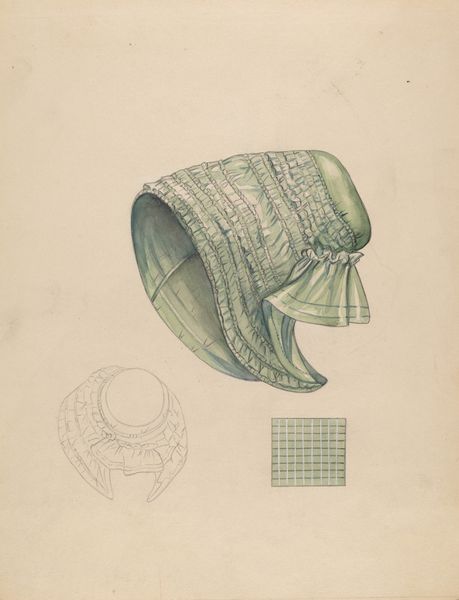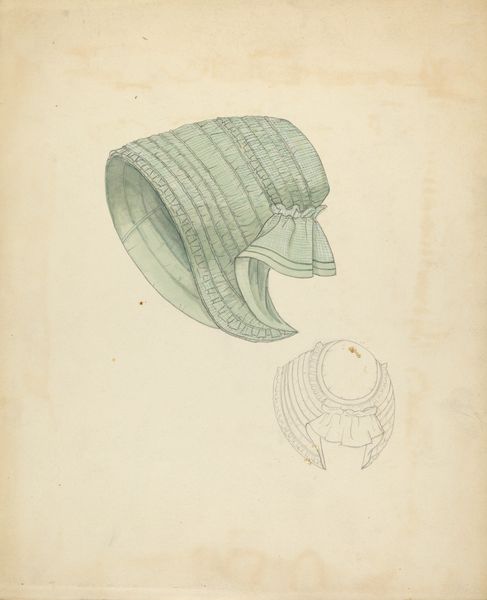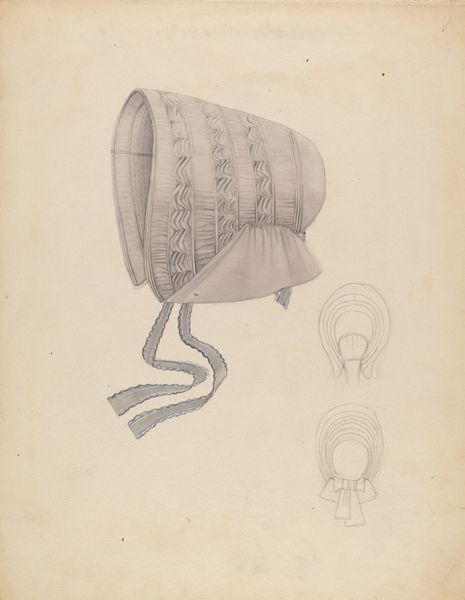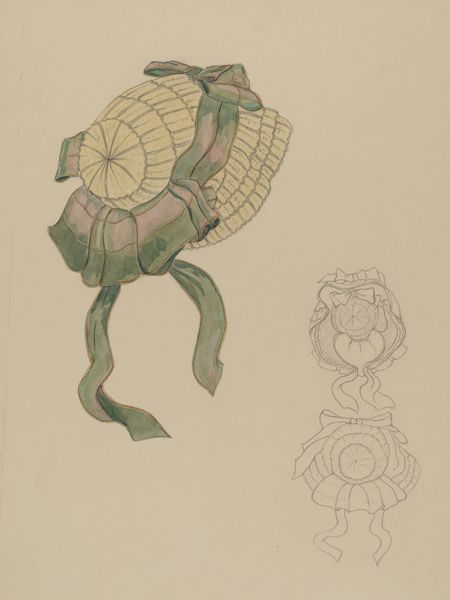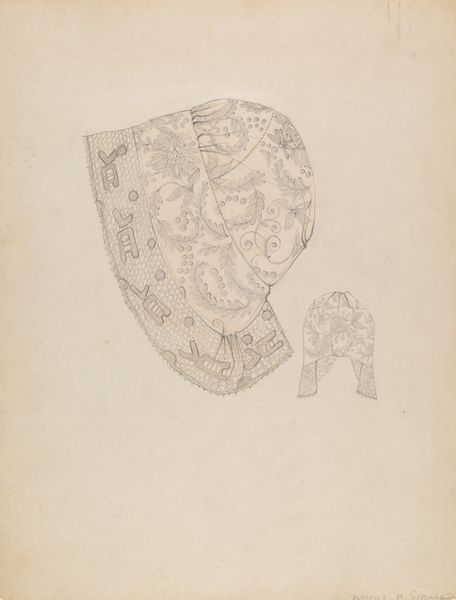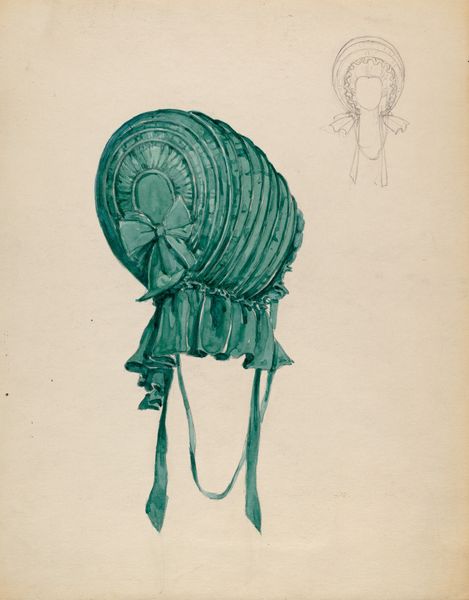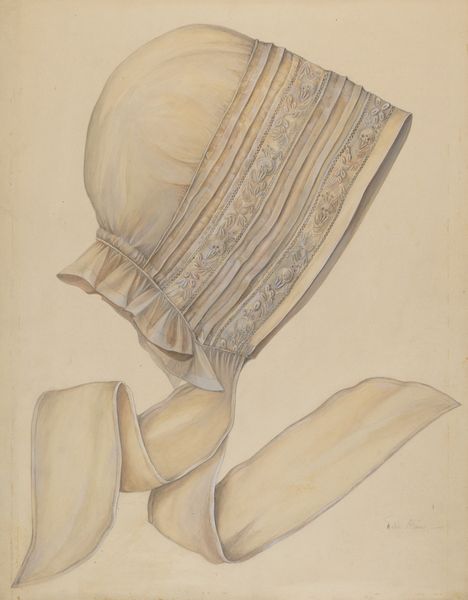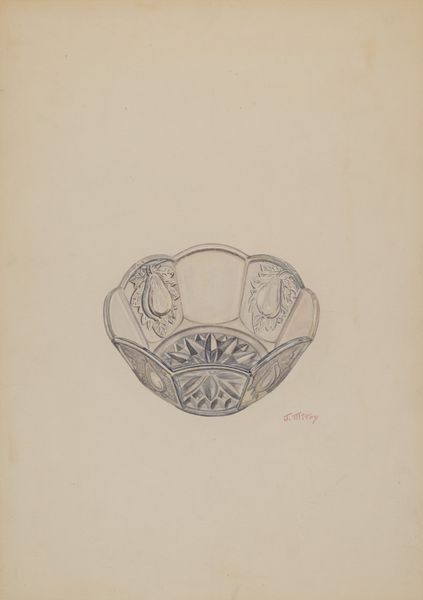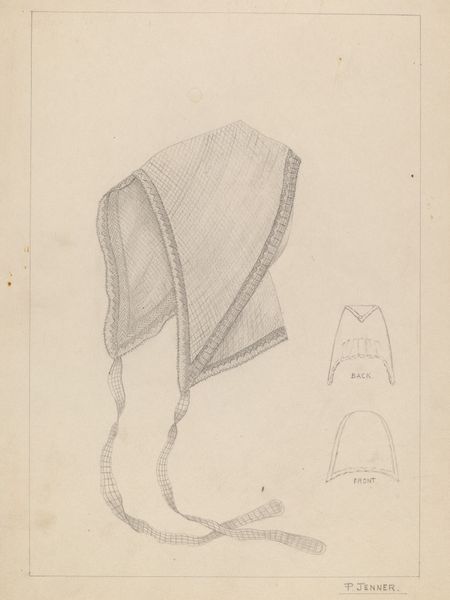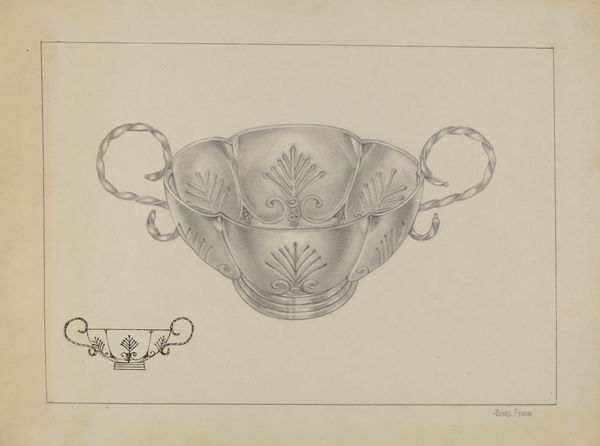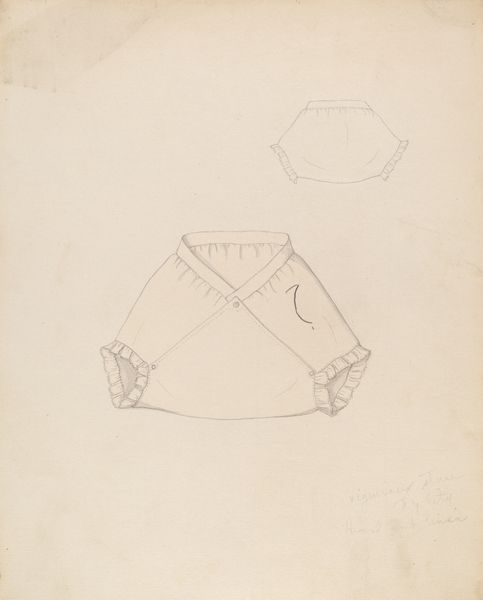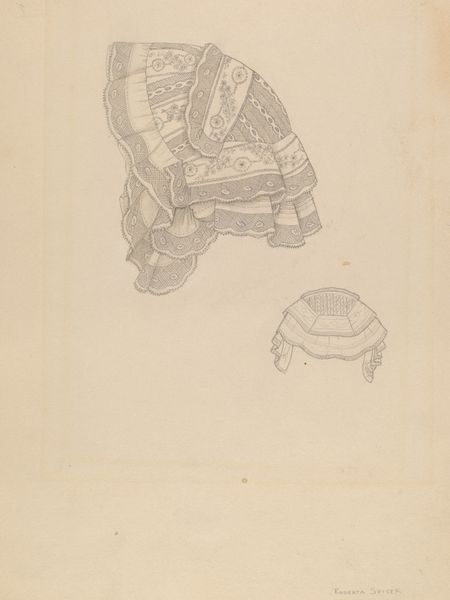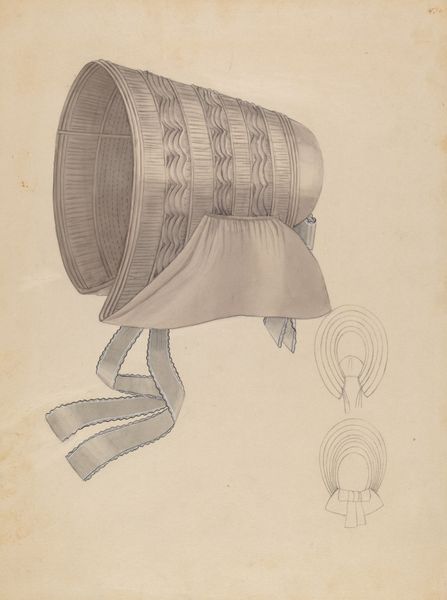
drawing, watercolor
#
drawing
#
watercolor
#
watercolor
#
realism
Dimensions: overall: 28.8 x 22.9 cm (11 5/16 x 9 in.)
Copyright: National Gallery of Art: CC0 1.0
Editor: Here we have "Bonnet," a watercolor drawing created around 1940 by Nancy Crimi. There's a delicate, almost ghostly quality to it. It feels both intimate and removed. What's your interpretation of this piece? Curator: It’s interesting you use the word 'ghostly.' I see this as more than a simple depiction of an object; it's a study of absence. Consider the context: 1940. Women’s roles were dramatically shifting with the onset of war. How might this bonnet, a symbol of domesticity and traditional femininity, be perceived in that light? Is it a relic? A poignant reminder of a world left behind as women entered factories and took on traditionally male roles? Editor: I never considered the impact of WWII on something as seemingly simple as a bonnet! I was so focused on its visual lightness. Curator: The lightness is crucial, but think about it in conjunction with the social and historical weight of the object itself. Notice how the sketch beneath hints at other versions or possibilities. What does that imply about identity and representation, especially for women during this transformative era? Editor: It makes me wonder about all the unseen labor, all the constraints and expectations tied to this garment, especially during a time when women were breaking free from those roles. I’m also realizing that it makes you question: who would wear this bonnet, and for what reason? Curator: Precisely. By looking at art through a lens of social change, especially gender roles and expectations, we are able to transform a seemingly mundane object into a charged political signifier. It asks us to confront the complexities of identity and representation. Editor: This has really opened my eyes. I was so caught up in the aesthetic qualities that I overlooked its historical significance. Curator: And that's the power of art history; the constant dialogue, where history and visuality deepen our understanding.
Comments
No comments
Be the first to comment and join the conversation on the ultimate creative platform.
